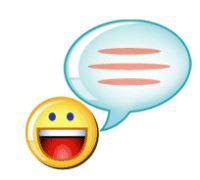Should you turn off the computer or the monitor when it is not in use?
Alternatively, should it be left in Standby mode?
When you turn on electrical equipment it uses a large amount of power, and then it goes down to its "rated consumption" as stated on the label. This is measured in watts or kilowatts. This sudden jump in electricity is know as a spike. You can see it on a digital power meter, but there is a way that it can be observed more easily.
Just switch on your air conditioner, refrigerator, or vacuum cleaner. It's best if that appliance is plugged into the same circuit for the purpose of this experiment.
Your lights may dim briefly and then resume their former brightness during this "spiking" and it will then go back to its normal level of power.
Another way of looking at this is with a standard incandescent light bulbs. Have you noticed that they seem to be able to stay on forever, but they burn out when you turn them on? That's also because of that initial spike of electricity.
So, what's the problem?
Computers have delicate electronics inside of them. The electronics in laptops may be even more delicate. As the computer ages, the components suffer from repeatedly being turned on and off (technicians say that the parts are fried). Over the course of time, the repeated spiking damages some components. It is thus a good idea to reduce the number of times that you spike these delicate parts.
So, computers should be left on, right?
Well, laptops heat up more than desktop computers, so it is not a good idea to leave them on. Laptops do not have the same system of fans that is in desktop computers. Leaving it on will fry the parts in a different way than turning it off and on, but the result will be effectively the same.
OK, so I'll leave the computer in Standby or Hibernate mode
Those modes are different, as follows:
Standby
- The machine is powered down so that it uses practically no power.
- Your data is saved (if you have enough installed memory)
Hibernate
- The machine is powered off.
- The data is saved as an "image" on the hard drive. When you turn on the computer, everything is where it was. Unsaved unsaved work is restored, Windows is in its familiar position, and you can continue working.
Lower your electric bill
Hibernation and standby options are available because laptops have limited battery life and desktop computers use a considerable amount of electricity.
The "Energy Star" power consumption rating shows that manufacturers are becoming aware of the environment.
Standby mode is useful when a laptop is moved from one location to another. Batteries last significantly longer between recharges.
Hibernate, on the other hand, is not as useful. It takes nearly as long to power up to your previous state, and you still spike the mainboard during this time. You may want to use it because your Desktop seems to appear the same as the last time it was used.
Standby mode therefore seems to be a better option for extending the life of laptop. This is important, because laptops cost more and they are replaced less frequently. This issue is less important with a desktop computer.
There is still another option: You can have many of the benefits of switching the computer off and having the benefits of Standby mode.
Use the power setting in the Control Panel
Many computer programs "leak" memory. If a computer program uses 15MB when it is started, it may use 55MB two weeks later. This has nothing to do with anything you've done, and it is not because the program is working any harder. The programs leak memory because they are written and designed poorly.
What is the solution?
Restart your computer periodically. Better yet - leave it off overnight from time to time so that the parts can cool down to room temperature. I turn off my own computer once a week for Shabbat. I find that to be a reasonable compromise.
During the week, between these rest breaks, use the standby function in order to prolong the lifetime of your investment.








